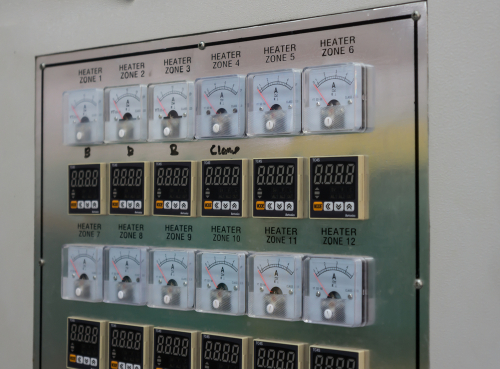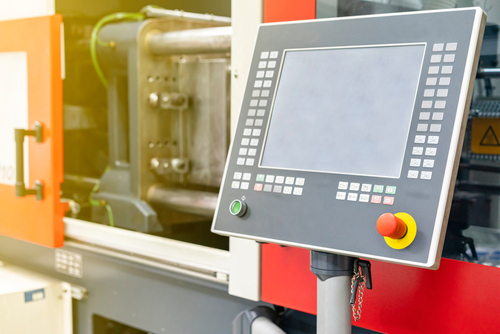
What are the quality parameters of plastic injection molding?
The specific measures related to the process are referred to as process parameters or process variables. They indicate whether operations meet the necessary specifications or they need adjusting. The following are some of the most important parameters that have a high impact on the quality of the final product:
Melt temperature
In order to secure a smooth transition of the resin from solid to liquid state, it’s necessary to gradually heat the plastic. Carefully setting up the temperature is critical to ensure the material is properly melted and not allowed to burn. While the required temperature depends on the type of material and characteristics of the part, a common range is from 300 to 800 degrees Fahrenheit.
The monitoring system includes thermocouples, which sense the temperature, and controllers, which regulate the temperature according to the settings adjusted by the operator.
Mold temperature
The temperature of the mold is essential as it can significantly affect the quality of the part. If the temperature isn’t appropriate, it can result in defects such as jetting, sink marks, and warpage. Depending on the type of plastic, it can affect part properties such as:
- Molecular weight
- Fatigue resistance
- Stress cracks
- Wear resistance
- Dimensional stability
- Creep resistance
Injection pressure
Injection pressure comes from the main hydraulic pressure that pushes the injection screw, forcing the molten plastic into the cavity. It plays an essential role in the process as it keeps the mold closed. It needs to be high enough to properly fill the entire cavity. Adequate pressure is calculated based on the dimensions and structure of the part.
Packing pressure
The pressure that is kept on the molten resin after the filling is referred to as packing or holding pressure. It helps secure controlled shrinkage and proper density by preventing backflow of the resin. When it’s too low, it can result in dimensional instability and excessive shrinkage. If it’s too high, it can make the part prone to flash, stress near the gate, and overfilling.
Holding
This phase is time-controlled and it refers to the period during which the resin is kept in place under the packing pressure until the point of gate freeze, after which the material begins to cool down. Gate freeze is the stage when no more molten plastic can flow into the gate and the pressure is used to prevent backflow.
Cooling, holding, and injection time
The time required to fill the mold is short and typically doesn’t exceed 10 seconds. Holding time takes longer and it depends on the part’s wall thickness. However, it shouldn’t exceed the gate freezing point. The duration of cooling depends on the mold temperature and the thickness of the part.
Who are the best plastic injection mold manufacturers?
